Abstract
Gibbon and Church (1990, 1992) have recently confirmed an important, parameter-free prediction of the behavioral theory of timing (Killeen & Fetterman, 1988): The times of exiting from a bout of activity are positively correlated with the times of entrance to it. The correlations were slightly less than predicted, however, and the correlations between the start of an activity and the time spent engaged in that activity were negative, rather than zero. We adapted their serial model as an augmented (one-parameter) version of the behavioral theory, positing a lag between the receipt of a pulse from the pacemaker and transition into the next class of responses. The augmented version of the behavioral theory further improved the correspondence between the theory and the correlational data reported by Gibbon and Church. It also accounts for previously unpublished data from our laboratory derived from a new timing technique, the "peak choice" procedure. We show that the measured variance of movement times from one key to another closely approximates the estimated variance of transition times recovered from fits of the augmented model to the data. Such correspondence both attests to the correct identification of this source of variance and suggests ways to remove it, both from behavior and from our models of behavior.
Full text
PDF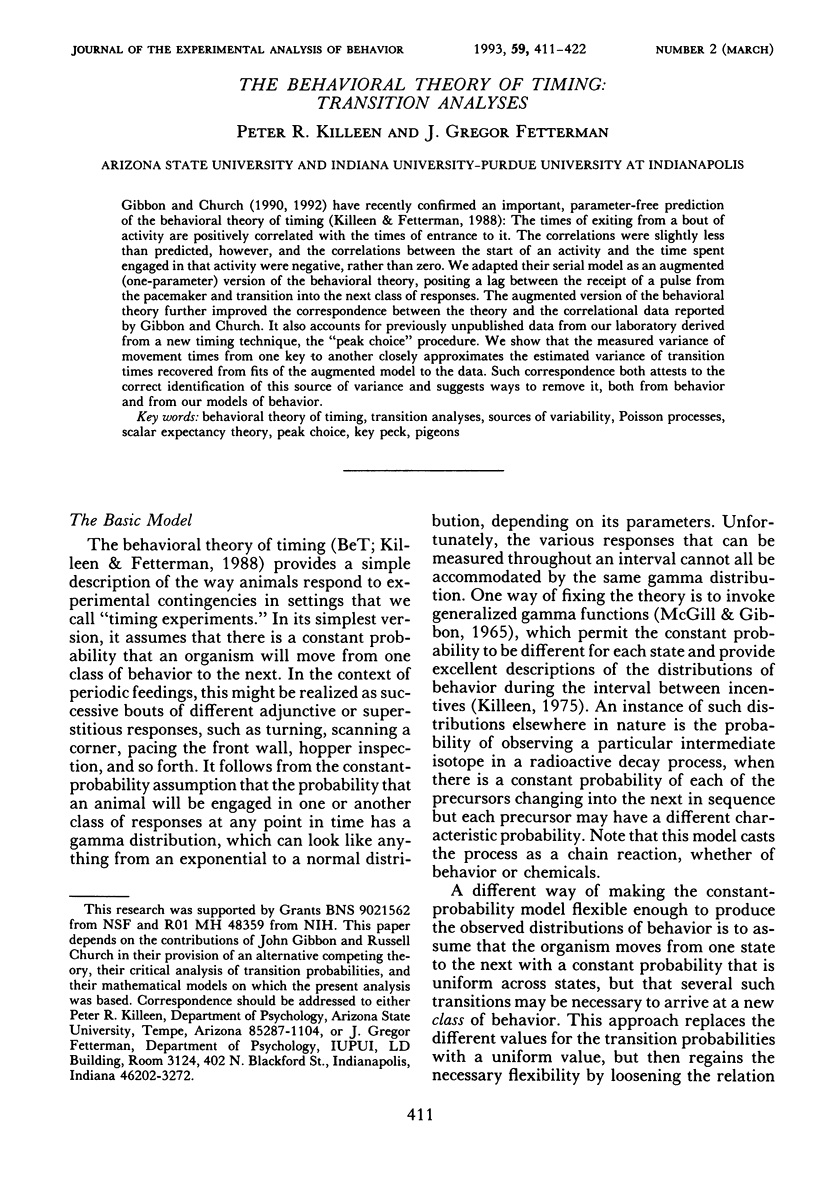
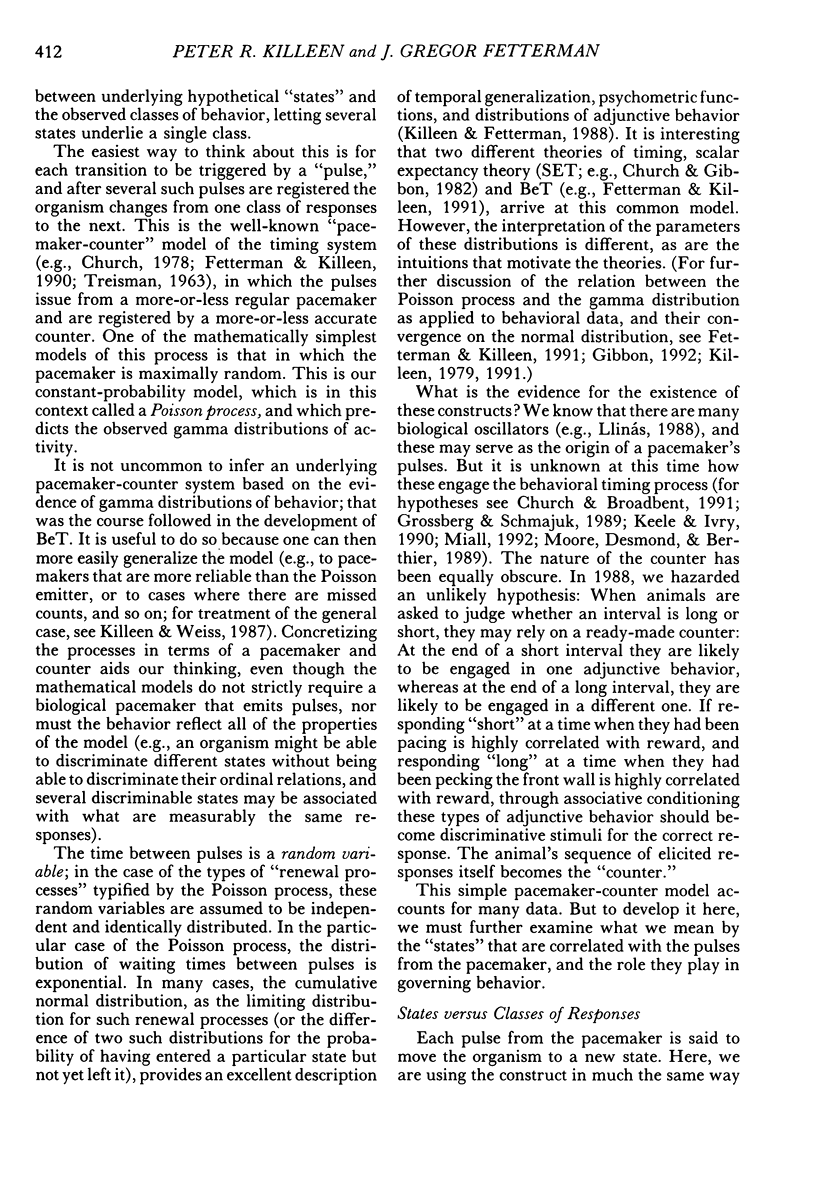
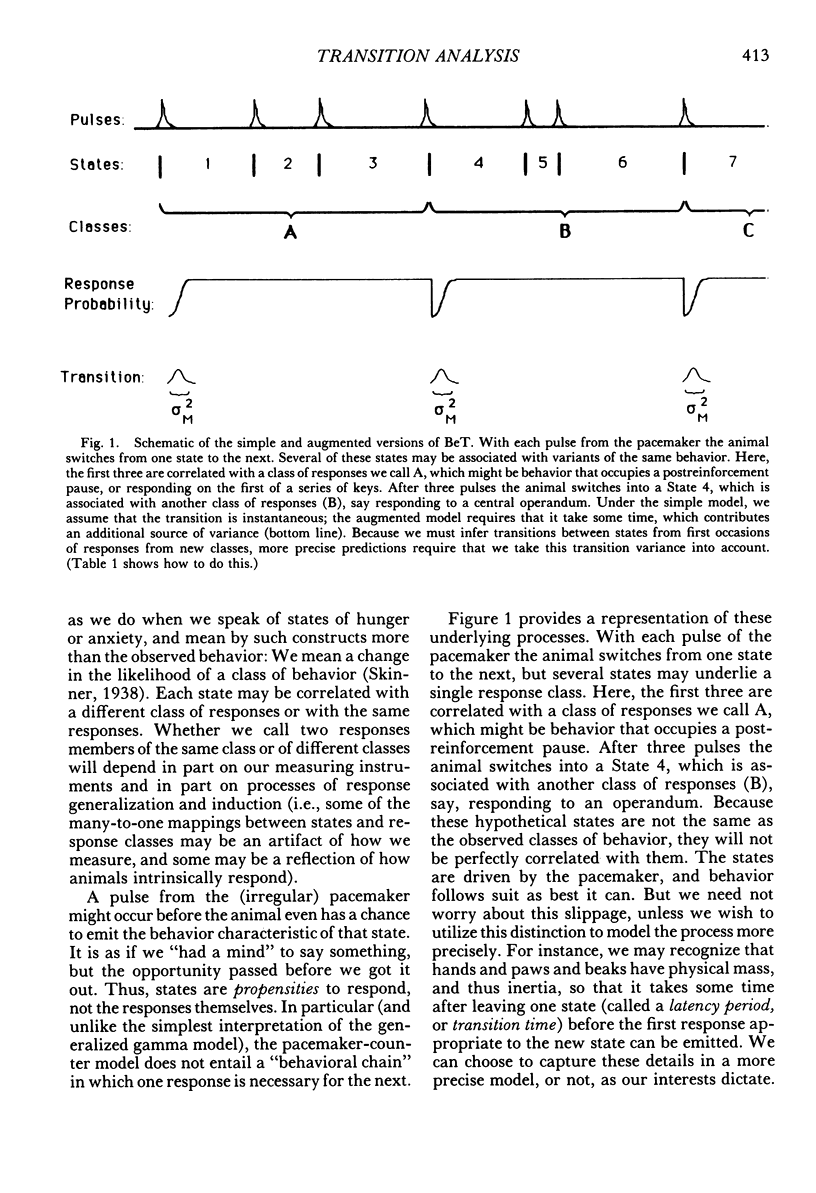
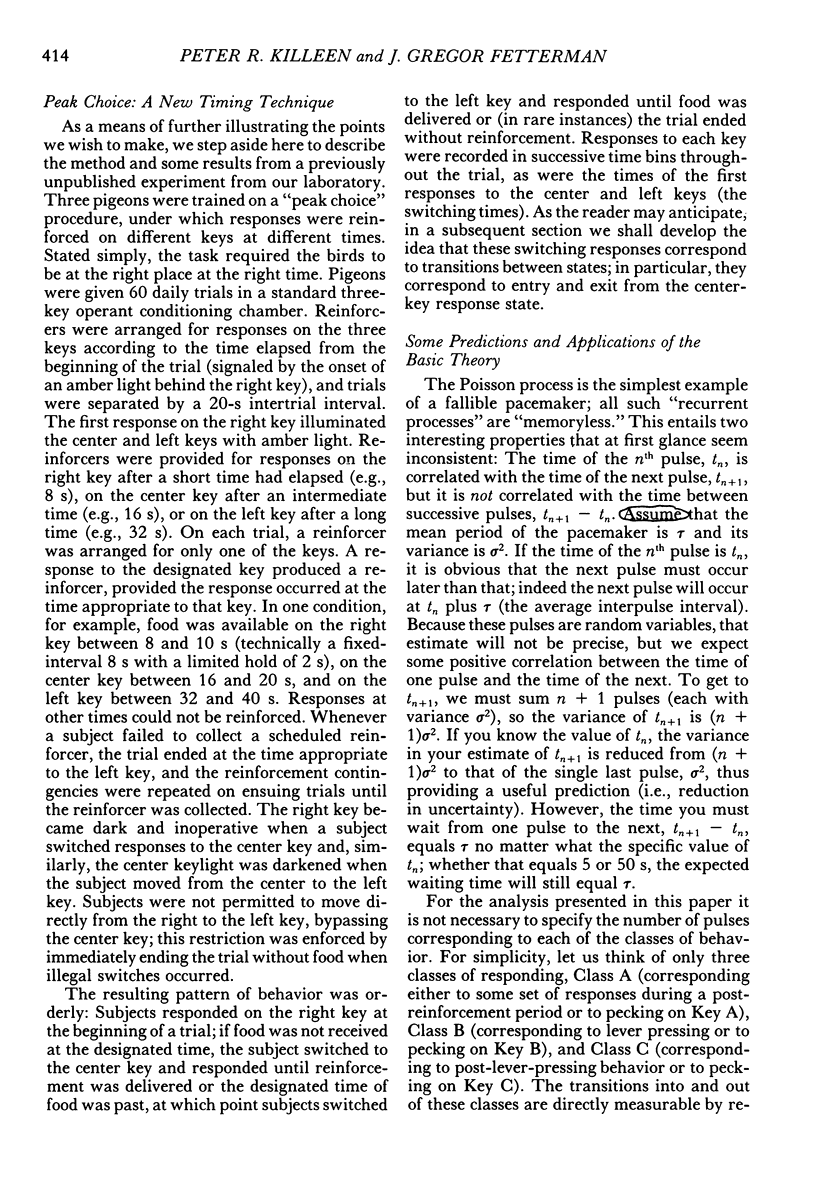
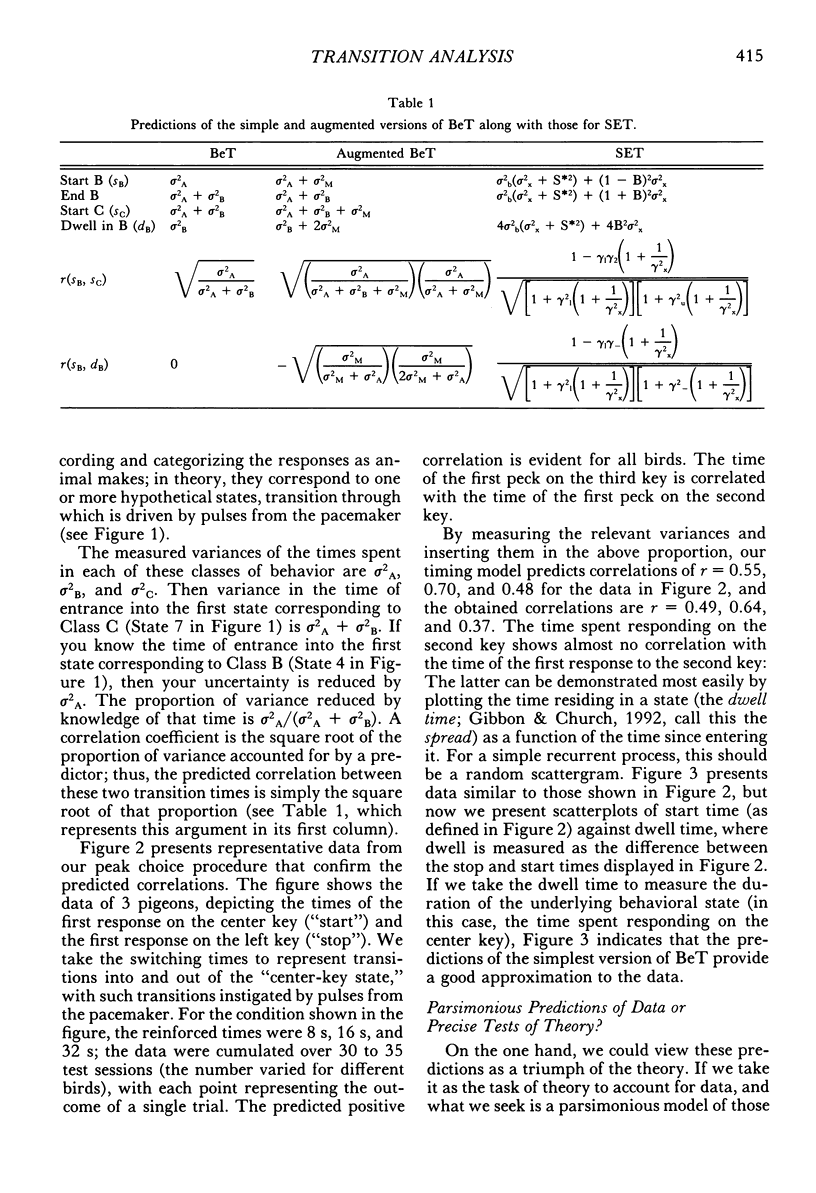
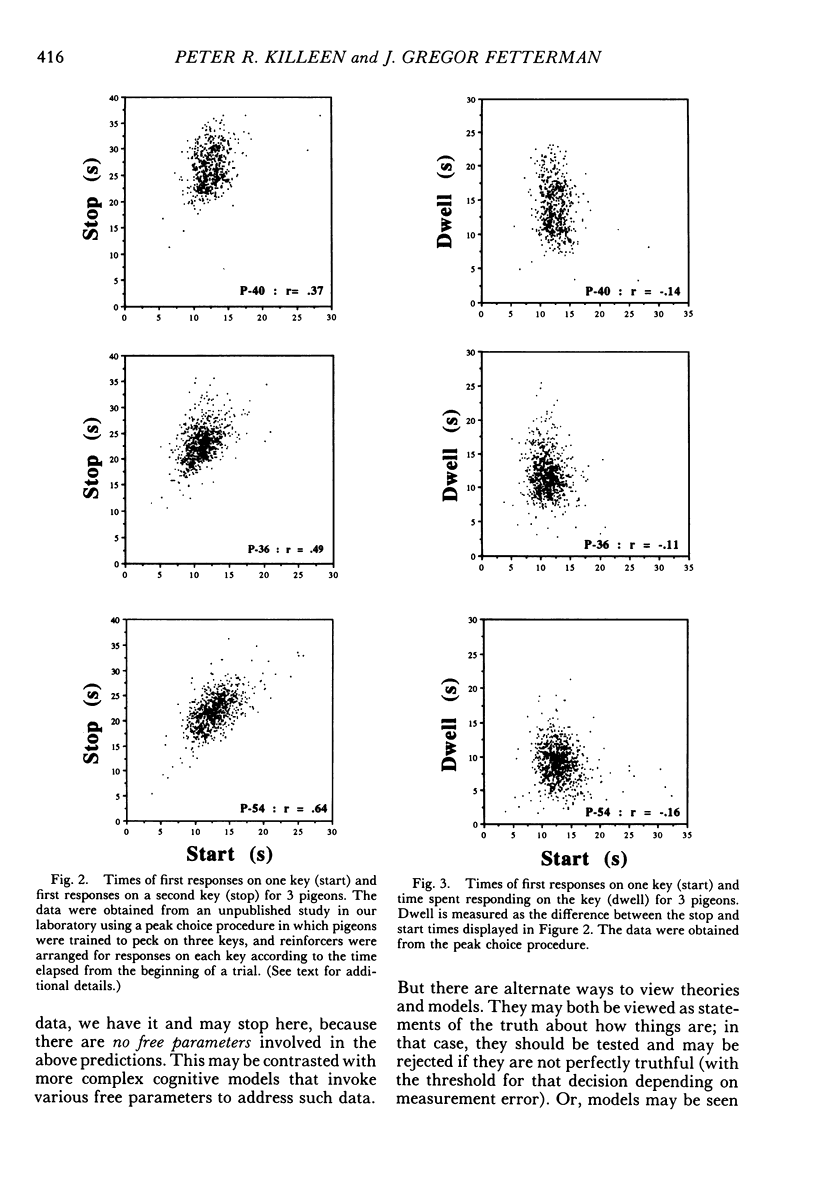
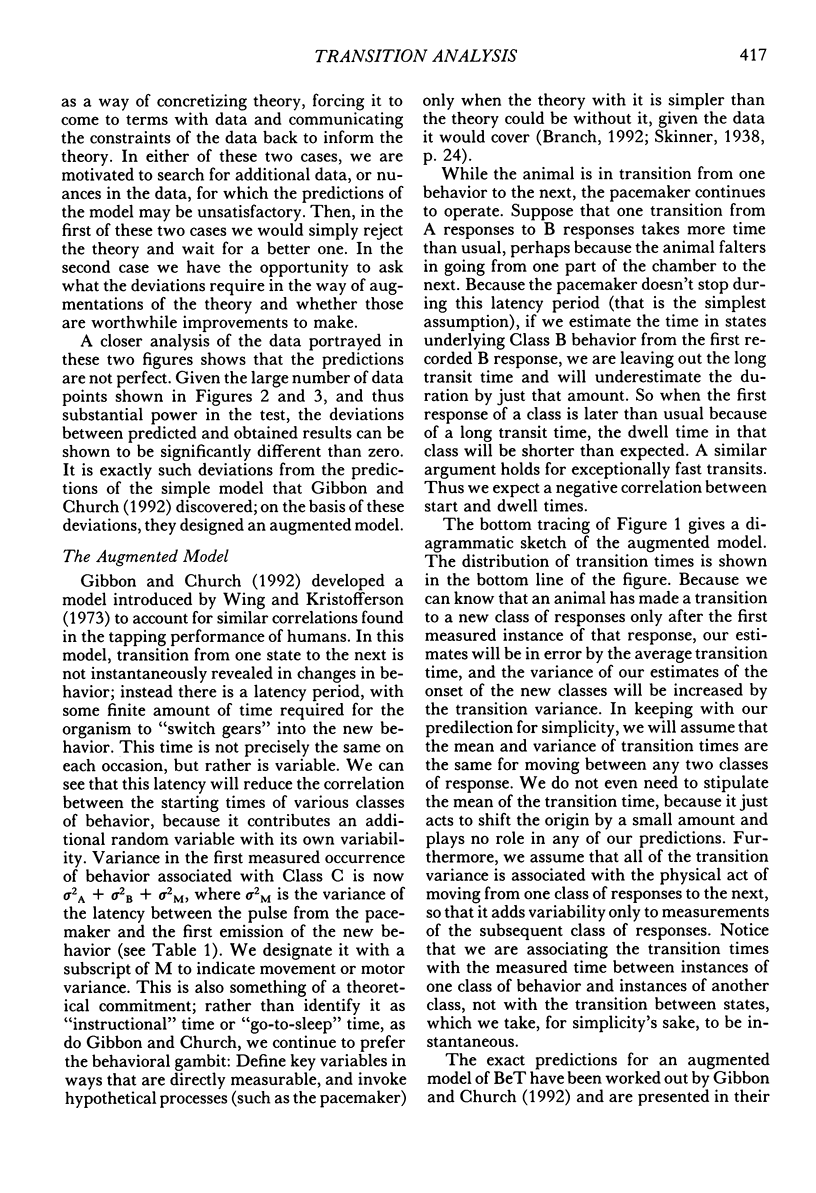
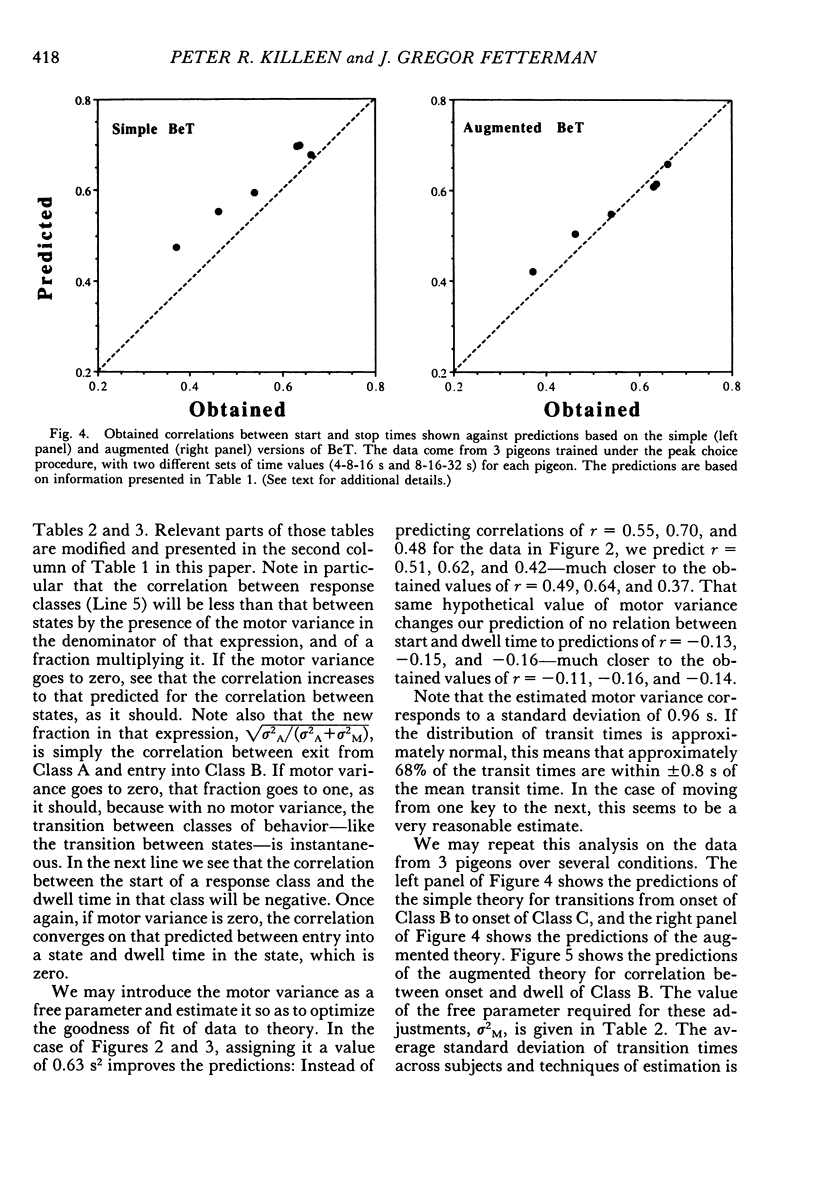
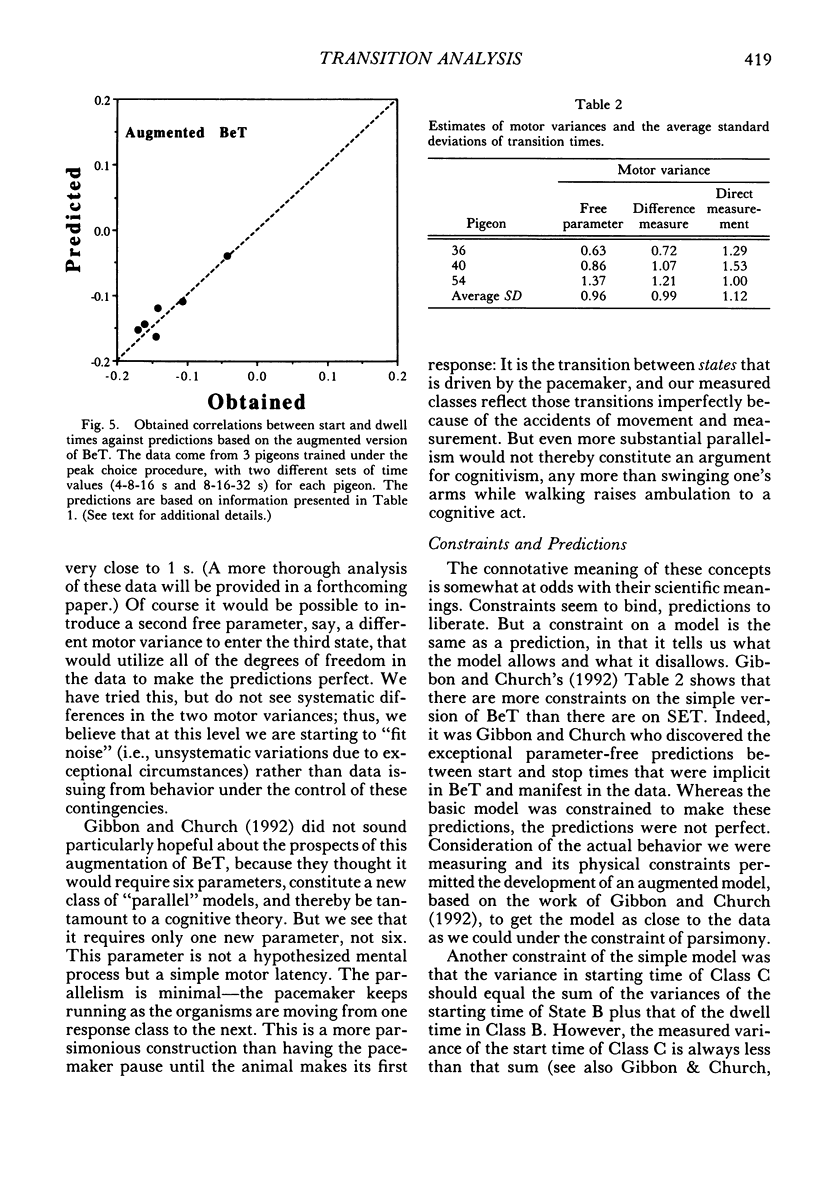
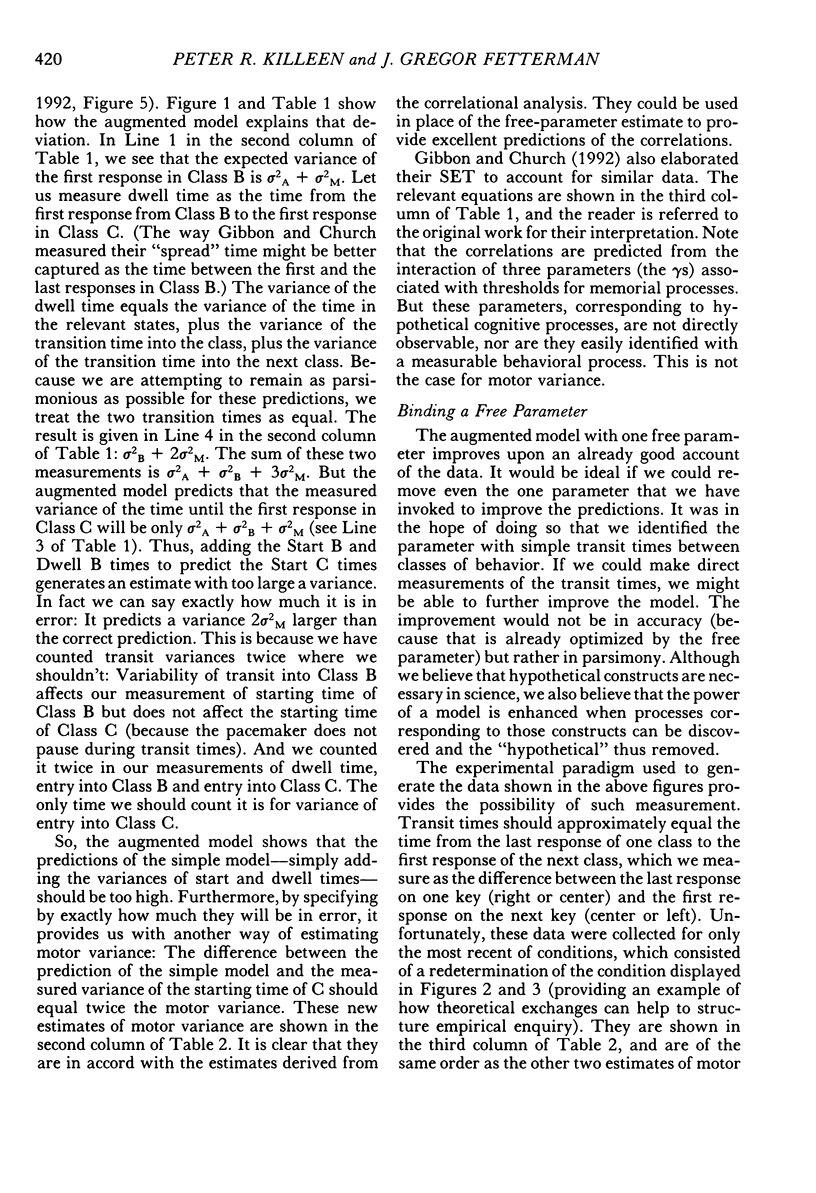
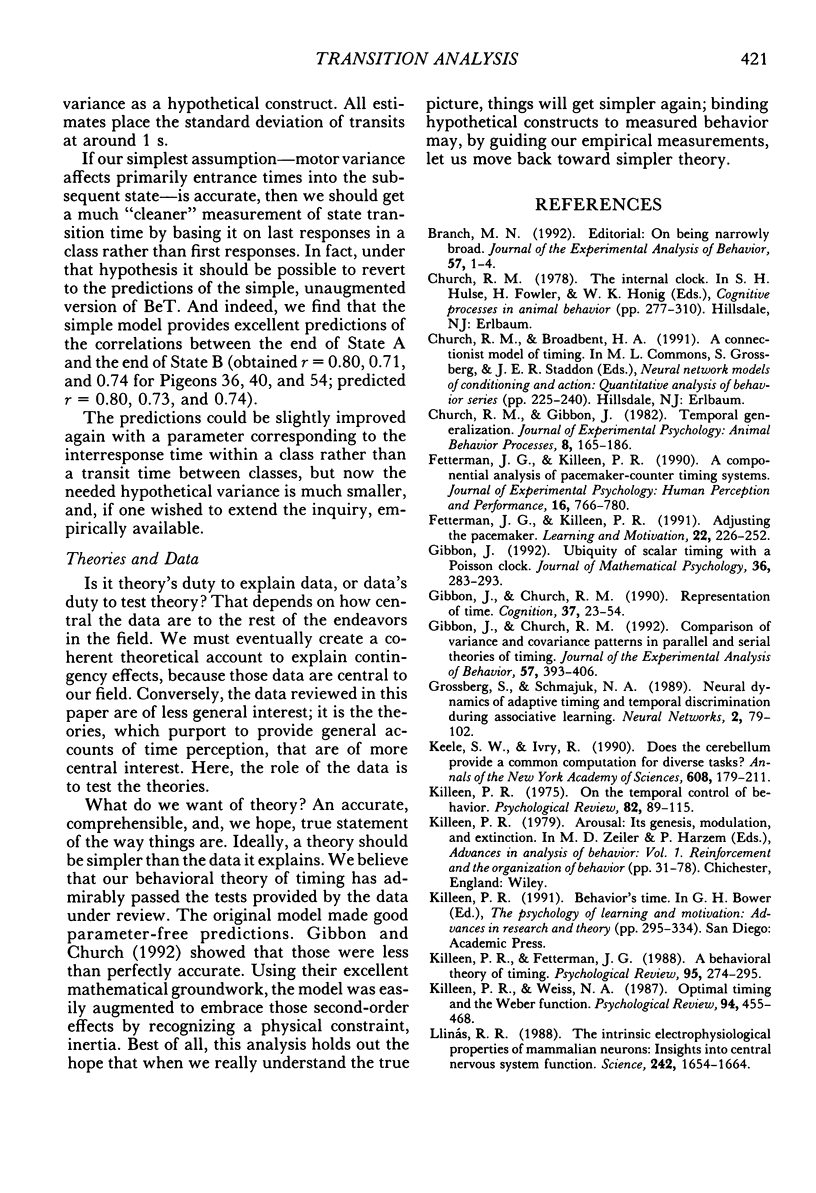

Selected References
These references are in PubMed. This may not be the complete list of references from this article.
- Branch M. N. On being narrowly broad (Editorial). J Exp Anal Behav. 1992 Jan;57(1):1–4. doi: 10.1901/jeab.1992.57-1. [DOI] [PMC free article] [PubMed] [Google Scholar]
- Fetterman J. G., Killeen P. R. A componential analysis of pacemaker-counter timing systems. J Exp Psychol Hum Percept Perform. 1990 Nov;16(4):766–780. doi: 10.1037//0096-1523.16.4.766. [DOI] [PubMed] [Google Scholar]
- Gibbon J., Church R. M. Comparison of variance and covariance patterns in parallel and serial theories of timing. J Exp Anal Behav. 1992 May;57(3):393–406. doi: 10.1901/jeab.1992.57-393. [DOI] [PMC free article] [PubMed] [Google Scholar]
- Gibbon J., Church R. M. Representation of time. Cognition. 1990 Nov;37(1-2):23–54. doi: 10.1016/0010-0277(90)90017-e. [DOI] [PubMed] [Google Scholar]
- Keele S. W., Ivry R. Does the cerebellum provide a common computation for diverse tasks? A timing hypothesis. Ann N Y Acad Sci. 1990;608:179–211. doi: 10.1111/j.1749-6632.1990.tb48897.x. [DOI] [PubMed] [Google Scholar]
- Killeen P. R., Fetterman J. G. A behavioral theory of timing. Psychol Rev. 1988 Apr;95(2):274–295. doi: 10.1037/0033-295x.95.2.274. [DOI] [PubMed] [Google Scholar]
- Killeen P. R., Weiss N. A. Optimal timing and the Weber function. Psychol Rev. 1987 Oct;94(4):455–468. [PubMed] [Google Scholar]
- Llinás R. R. The intrinsic electrophysiological properties of mammalian neurons: insights into central nervous system function. Science. 1988 Dec 23;242(4886):1654–1664. doi: 10.1126/science.3059497. [DOI] [PubMed] [Google Scholar]
- Moore J. W., Desmond J. E., Berthier N. E. Adaptively timed conditioned responses and the cerebellum: a neural network approach. Biol Cybern. 1989;62(1):17–28. doi: 10.1007/BF00217657. [DOI] [PubMed] [Google Scholar]


